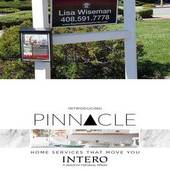What's a trust deed?
A trust deed (also called a deed of trust) isn't like the other types of Deeds; It's a version of a mortgage, commonly used in some states (California, for example). It's not used to transfer property. And if foreclosed on involves a non-judicial foreclosure.
A trust deed transfers title of land to a "trustee," usually a trust or title company, which holds the land as security for a loan. When the loan is paid off, title is transferred to the borrower. The trustee has no powers unless the borrower defaults on the loan; then the trustee can sell the property and pay the lender back from the proceeds, without first going to court. After the property has been sold on the courthouse steps there may be a right of redemption, especially for homeowners.
The Differences between a trust deed and a mortgage
The basic difference between the mortgage as a security instrument and a Deed of Trust is that in a Deed of Trust there are three parties involved, the borrower, the lender, and a trustee, whereas in a mortgage document there are only two parties involved, the borrower and the lender.
In a Deed of Trust, the borrower conveys title to a trustee who will hold title to the property for the benefit of the lender. The title remains in trust until the loan is paid. Often a title company, escrow company or bank, is listed as the trustee on the Deed of Trust. When the loan has been paid, the trustee will issue a release deed or trustee's reconveyance deed. This deed of reconveyance should be recorded at the county recorder's office, to make public notice that the loan has been paid off and that the lender's interest in the property has ended. Occasionally the recording of a reconveyance deed is forgotten. Typically this is discovered when the property is sold.
Another difference between a mortgage and a deed of trust is the manner in which foreclosure proceedings take place. State law will determine the method of foreclosure which must be used. Generally, the rules when using a Deed of Trust allow for a faster foreclosure time than with a judicial foreclosure required with a mortgage. Under a Deed of Trust, when the borrower defaults on the loan, the lender delivers the Deed of Trust to the trustee, who then is instructed to sell the property.
Quit claim deed
The quit claim deed is the least protective deed for the buyer. Basically, it only conveys whatever rights or interests the grantor has in the property. It provides no warranties or covenants to the buyer. If the grantor has good title, the quitclaim deed is as effective as a general warranty deed, but with none of the guarantees. Quitclaim deeds are frequently used to cure defects in the title. Quitclaim deeds are also frequently used to transfer property between family members also
A Trustee's deed
A trustee's deed is a deed to be executed by a person serving as a trustee in their appointed capacity. A trust deed (or deed of trust) is the most commonly used document to secure a loan on real property in the state of California. It differs from a mortgage deed in that there are 3 parties, a trustor (borrower), a beneficiary (lender) and a trustee (holder of the legal title to the property). A mortgage deed has 2 parties, a beneficiary (lender) and the borrower.
The trustee holds the legal title in trust for the beneficiary and has the power to sell the property if the trustor (borrower) does not fulfill the obligations that are required under the deed of trust; i.e. make payments in a timely fashion. The trustee also has the power to reconvey the legal title to the trustor if the beneficiary so requests. This request is made when the promissory note underlying the deed of trust is paid in full.

Comments(0)